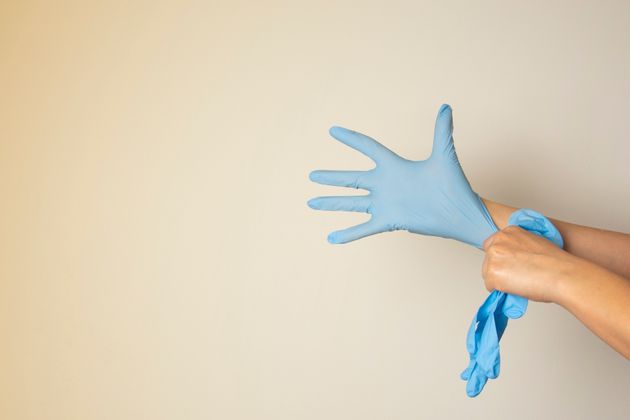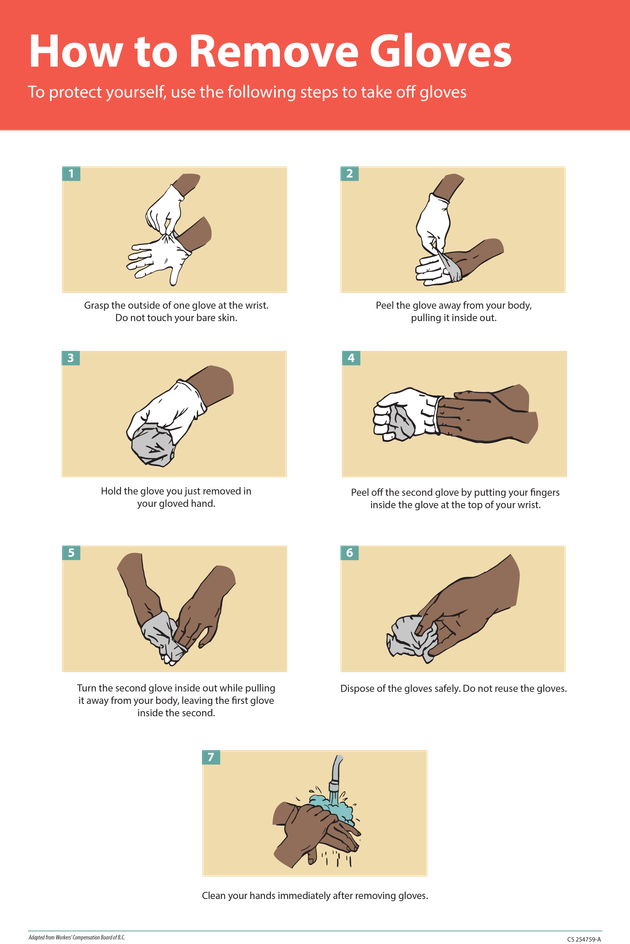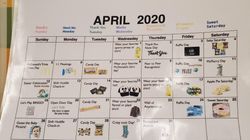As the coronavirus pandemic spreads across the nation, people are making creative masks to protect themselves from respiratory droplets, believed to be a primary transmitter of the disease Covid-19. But do gloves protect people against catching coronavirus, too?
Yes. Gloves are used by health care workers, but the Centers For Disease Control and Prevention does not currently advise people who aren’t health care workers to use gloves outside their homes. The CDC says it’s OK to use them while cleaning and disinfecting your home, but recommends disposing of them after each use. If you are taking care of someone who is sick with the coronavirus, the CDC recommends wearing disposable gloves when handling their dirty laundry.
Gloves create a barrier between your skin and what you touch, but they can also spread contamination.
Lucy Wilson, the chair of the department of emergency health services at the University of Maryland Baltimore County, said gloves can make wearers feel more protected than they actually are.
“It could give you a false sense of security so you might let your guard down in other ways, such as social distancing, hand hygiene,” she said. “And there’s a question of whether people who don’t have gloves may actually wash their hands more because they are more conscious of their hands touching surfaces.”
If you are using gloves, keep in mind how to properly put them on and take them off so you don’t contaminate yourself and other surfaces.

Assume your gloves are contaminated if you’ve touched anything.
While you are wearing gloves, Wilson said you should “assume they are contaminated if you’ve touched things.” Be conscious not to touch your face with them and be aware of whether your gloves have touched your wallet, steering wheel or personal effects.
Wearing gloves is not an excuse not to wash your hands. “You always have got to do hand hygiene before you put your gloves on and after you take them off,” Wilson said. “If you are going to go and switch and put on a second pair of gloves, you still have to do that hand hygiene, because you can contaminate yourself or the gloves as you’re taking them off or putting a new pair on.”
To dispose of your dirty gloves safely, put them in the trash can and immediately wash your hands again with soap for at least 20 seconds.
To take gloves off properly, invert them carefully.
After removing one hand from a glove, you may have encountered the conundrum of how to take off the second glove without your bare clean hand touching it.
The CDC created a helpful infographic that includes what to do after you have peeled one glove off:

If you are properly taking off a glove, you need to pull it inside out. Inverting the glove ensures your used glove doesn’t do more harm than good. “If you’re removing it and you’re not inverting it … any of that surface could touch something else and contaminate another surface,” Wilson said.
Another issue is the type of gloves you use. Thomas Russo, the chief of the infectious disease division at the University of Buffalo, noted that using improvised gloves (like your winter pair) could make inversion more difficult than if you’re wearing rubber latex medical gloves. Russo said that in the medical world, you can slip the clean hand under the cuff of the second glove, so you never touch a contaminated surface, and you pull the glove inside out. “But how can you do that with a winter glove? You can’t really do that easily. You could do it with a medical glove because they’re really thin and designed for one-and-done,” he said.
The difficulty of taking off and decontaminating gloves is a reason Russo does not recommend them to the general public. “Even if you remember to decontaminate your gloves, you might not be able to do it optimally,” Russo said.
“I think it is important to stress that we think this route of transmission is less important than the respiratory spread.”


